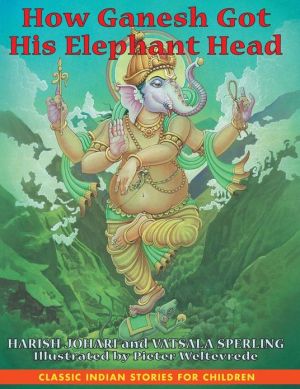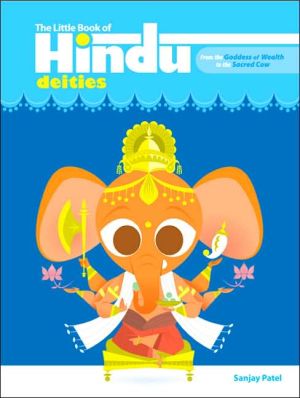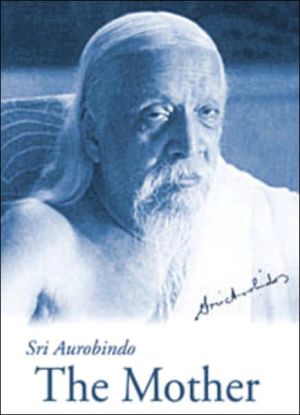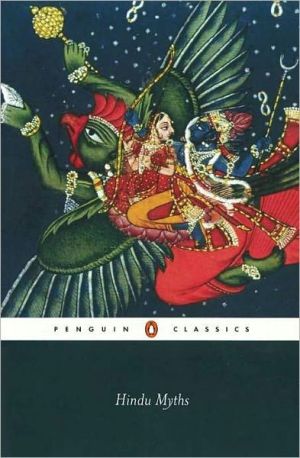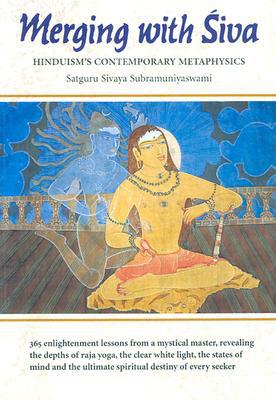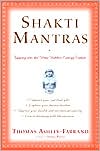How Ganesh Got His Elephant Head
The magical story of how Ganesh, the son of Shiva and Parvati, was brought back to life with the head of an elephant\ • The story of one of the most beloved characters in Indian lore, made accessible for Western children\ • Illustrated throughout with paintings from the classic Indian tradition\ Any Indian child can tell you how the beloved god Ganesh got his elephant’s head—now American children can know as well. For centuries Indian children have grown up hearing Ganesh’s story—how his...
Search in google:
The magical story of how Ganesh, the son of Shiva and Parvati, was brought back to life with the head of an elephant • The story of one of the most beloved characters in Indian lore, made accessible for Western children • Illustrated throughout with paintings from the classic Indian tradition Any Indian child can tell you how the beloved god Ganesh got his elephant’s head--now American children can know as well. For centuries Indian children have grown up hearing Ganesh’s story--how his mother, Parvati (an incarnation of the great mother goddess), created a small boy from sandalwood soap and commanded that he guard the palace against all intruders while she took her bath. How her husband, Shiva (the fearsome god of destruction), didn’t take kindly to being barred from his own home. How Shiva beheaded the boy during the cosmic war that followed, but then, when he realized that the balance of the entire universe was at stake, brought the boy back to life by grafting an elephant’s head onto his body and made him the people’s intercessor against the powers of destruction. Ganesh’s timeless story teaches children about the steadfast power of dedication to duty, the awe-inspiring power of a mother’s love for her child, and the gentle power of compassion, which holds the world together. Accompanied by rich, color illustrations prepared according to the traditional Hindu canon, How Ganesh Got His Elephant Head will transport children to a magical world filled with ancient wisdom. Harish Johari (1934–1999) authored many books that bring Eastern spiritual traditions to Western audiences. Vatsala Sperling, a native of India, was trained in traditional Brahmin religious rites and is fluent in Sanskrit. She is the coauthor ofA Marriage Made in Heaven and lives in Vermont with her husband and son. Pieter Weltevrede, who began his artistic studies with Harish Johari in 1977 and also studied with Shri Chandra Bal, is a social scientist by training. He lives in Holland with his wife and two children and travels to India annually. Uma Krishnaswami - Children's Literature Here in picture book form is the story of the beloved elephant headed god of Hindu mythology, Ganesh (Ganesha in southern usage). Told in a storyteller's voice, the format includes an introductory note summarizing Ganesh's place in the Hindu pantheon of deities, but also underscoring his multiple manifestations, and the broad common appeal he holds in popular imagination. The story of how he got his elephant head is retold here in one of its many variants, in which the goddess Parvati creates the figure of a boy and blows life into it. Her consort Shiva, upon returning home and encountering the strange, oppositional child, gets angry. His loss of control launches a series of events that results in the Ganesh figure we know and in his unique position as remover of obstacles. Woven into the narrative are a number of other stories. As in a previous Johari-Weltevrede collaboration about Krishna, these stories are retold here in a single continuous narrative, emulating an oral telling. Both stories and images refrain from sugar-coating scenes of battle and bloodshed, but they do put them into the context of the larger mythological web. Weltevrede's Nav Durga is a scary figure, as are her accompanying goddesses wearing traditional skull necklaces. The text, however, supplies the reasons for this by detailing the power of the goddess to take the many forms that are needed of her. Notes to parents and teachers, and an afterword about the illustration process, round out the book. Despite the picture book format, this is material that will be best understood by children older than the 6 to 9 age group suggested by the publisher. A list of the "cast of characters" and a single reproducible black andwhite Ganesh line drawing for coloring, might find favor in some classrooms. 2003, Bear Cub Books, Ages 8 to 12.
Shiva, God of Destruction, was married to the beautiful mother goddess Parvati. He loved his wife deeply and passionately but he cared nothing for the schedules or dress codes or manners of a household. Clad in a tiger skin, with serpents coiled around his waist and shoulders, and a crescent moon tucked in his long, matted hair, he roamed the wilderness for weeks at a time, with nothing but animals for company.\ Parvati loved Shiva anyway, just the way he was. When he appeared unexpectedly at all hours of the day or night, she would welcome him patiently. She tried not to complain about his long absences, his abrupt departures, his unruly ways. The only time she protested was when he interrupted her in her bath. "Shiva," she would cry in exasperation, "have you no respect for privacy? Please, leave me in peace!"\ One afternoon after a long day of household duties, Parvati lay soaking in warm tub. Shiva had been gone for weeks. When would she see him next? Would he burst through the door right then and there? The thought of him barging in so rudely made her cranky.\ “I know!" she thought. “I'll make myself a little figure of a boy to guard the door." She hopped out of the tub and found a bail of modeling clay With deft fingers she fashioned a head, a cute button nose, big eyes. Working quickly, she gave the child sturdy legs and arms. Really, it looked quite lifelike!\ She took a breath, and blew gently all over it. Something stirred in her hand. Suddenly a little boy sprang forth, as strong and handsome as could be. He jumped lightly to the floor and turned to face her. "Dear Mother," the boy said to her, "now that I am here, what can I do to help?"\ "Dear son! Please, just stand at the door while I finish my bath, and do not let anyone in." She gave him a little wand to hold. "Here," she said with a smile. "Just wave this at anyone who tries to enter."\ The little boy was proud and pleased. He had no idea that Parvati was a goddess or that the stick in his hand was magic. He was happy just to march back and forth, wand in his hand like a baton, prepared to stop anyone who tried to disturb his newfound mother. And so, when Shiva, true to form, strode up to the door, he found a sturdy youngster with a strong voice and determined eyes barring his way.\ "Entry denied, sir!" said the boy.\ Shiva was puzzled. Who was this child? And why was he, Lord Shiva, God of Destruction, experiencing such difficulty getting past him? He found he couldn't even step forward toward the door! There was some strange, powerful force keeping him hack. As usual, however, he was in a hurry to return to the forest, so he asked his pet bull, Nandi, to investigate for him. The bull, backed up by Shiva's helpers, a band of ruffians called the Shivaganas, lowered his long horns to attack. But the brave little boy waved his wand, once, twice, thrice—and before they knew it, Nandi and his cohorts were in full retreat. They were mortified. This was the very first time anyone had dared to stand up to them. And worse yet, they had been defeated by a pudgy little boy!\ They found Shiva wandering in the forest. "I'm sorry, Lord Shiva." Nandi said, hanging his great head in shame. "The boy just waved his wand! We could not advance. It must have been very powerful magic!"
\ December-January 2004\ - AZNetNews\ "Ganesh's timeless story teaches children about the power of dedication to duty, and how compassion holds the world together."\ \ \ \ \ In the Library Reviews". . . a beautiful retelling of a classic Indian tale."\ \ \ Oct 21\ - Ghostvillage.com\ "Entertaining, enjoyable, and clearly written. . . . will share with readers very important themes in Hindu culture."\ \ \ \ \ Amanda Bugeaud"Although this book is meant for children aged 6 - 9, my daughter and I have enjoyed this book immensely. It is a very entertaining story with great introduction to Indian Gods. . . . I'll definitely be buying more children's books by these authors."\ \ \ \ \ Spirit of Change"The story embodies ancient and magical themes that are not common in Western literature."\ \ \ \ \ December-January 2004 AZNetNews"Ganesh's timeless story teaches children about the power of dedication to duty, and how compassion holds the world together."\ \ \ \ \ Oct 21 Ghostvillage.com"Entertaining, enjoyable, and clearly written. . . . will share with readers very important themes in Hindu culture."\ \ \ \ \ From the Publisher\ "The story embodies ancient and magical themes that are not common in Western literature."\ \ \ \ \ Children's LiteratureHere in picture book form is the story of the beloved elephant headed god of Hindu mythology, Ganesh (Ganesha in southern usage). Told in a storyteller's voice, the format includes an introductory note summarizing Ganesh's place in the Hindu pantheon of deities, but also underscoring his multiple manifestations, and the broad common appeal he holds in popular imagination. The story of how he got his elephant head is retold here in one of its many variants, in which the goddess Parvati creates the figure of a boy and blows life into it. Her consort Shiva, upon returning home and encountering the strange, oppositional child, gets angry. His loss of control launches a series of events that results in the Ganesh figure we know and in his unique position as remover of obstacles. Woven into the narrative are a number of other stories. As in a previous Johari-Weltevrede collaboration about Krishna, these stories are retold here in a single continuous narrative, emulating an oral telling. Both stories and images refrain from sugar-coating scenes of battle and bloodshed, but they do put them into the context of the larger mythological web. Weltevrede's Nav Durga is a scary figure, as are her accompanying goddesses wearing traditional skull necklaces. The text, however, supplies the reasons for this by detailing the power of the goddess to take the many forms that are needed of her. Notes to parents and teachers, and an afterword about the illustration process, round out the book. Despite the picture book format, this is material that will be best understood by children older than the 6 to 9 age group suggested by the publisher. A list of the "cast of characters" and a single reproducible black andwhite Ganesh line drawing for coloring, might find favor in some classrooms. 2003, Bear Cub Books, Ages 8 to 12. \ —Uma Krishnaswami\ \ \ \ \ School Library JournalGr 4-6-Ganesh, a Hindu god who is "loved as much as he is worshipped," is the subject of this traditional tale from India. The authors trace his creation from the hands of the goddess Parvati to his ultimate status as a brave and wise god, and explain how he came to have the body of a boy and the head of an elephant. Unfortunately, the stilted, formal language and an overly moralistic tone detract from what is an otherwise intriguing story. Lush, detailed watercolor illustrations, done in a traditional Indian style, do much to advance the plot. Added features such as a "Cast of Characters" of Indian gods and goddesses and a reproducible line drawing of Ganesh are welcome additions; wordy, overly long passages, including an extended introduction; a note to parents and teachers; and a step-by-step explanation of how the illustrations were made, are not.-Sue Morgan, Tom Kitayama Elementary School, Union City, CA Copyright 2003 Reed Business Information.\ \
